From a reflection on the installation Tears, present at Palazzo Mora in the context of Personal Structures in Venice, the multimedia artist Ronit Keret (Israel) presents the essential features of his artistic practice, linked to a reflection on climatic and environmental urgencies.
Sara Buoso: It was a pleasure to see your multimedia installation Tears at Palazzo Mora. What event inspired this work and what prompted you to take on such responsibility for such pressing issues as melting glaciers in the era of global warming?
Ronit Keret: Fifteen years ago, I was in Argentina on a trip. I will never forget my first encounter with the Perito Moreno Glacier, a glacier that stretches for over 250 kilometers, eroding into the sea at an inconceivable speed. The “buildings” of ice slide powerfully into the sea below, telling the story of a painful phenomenon. When I was faced with this frightening spectacle, surrounded by the astonished screams of those around me, I felt that the end of the world was near. Months later, in a hypnotic state, I painted those frozen giants. After studying the meaning of this phenomenon, I realized how I could represent it: through the use of polystyrene, starting from the contrast between the lightness of this material and the power of ice water, until the simple fact that, unlike those glaciers, Styrofoam will never rot. Not to mention the fact that the difficulty of disposal of polystyrene is one of the major causes of the disappearance of glaciers as part of a wider environmental phenomenon.
I was fascinated by your experimental use of unconventional materials, namely the use of polystyrene in sculptural form as if it were a plastic material.
Polystyrene is an emblematic non-biodegradable artificial material. It is a polystyrene foam produced commercially by petroleum. In essence, it is an antiscultory material: because of its inelasticity, it has a tendency to decompose in infinite parts. My sculptures and installations are a continuation and an incarnation of my paintings. They consist of white polystyrene packaging scraps thrown in the trash after completing their original mission. I collect them and give them new life, recycling and shaping them through large-scale installations and in smaller sculptures. I chose to work with polystyrene for the contrast between the light mass of this material and the power and weight of the water of glaciers. The use of white polystyrene in my sculptures creates a stillness and a sense of the sublime, while giving the impression of being able to disintegrate at any time. In reality this is only an appearance that connotes my sculptures of a sense of protection. Polystyrene is cheap, available, light and soft: a surface of white and purity. But it is also harmful, dangerous, inexhaustible, a by-product of oil refining. Styrofoam is the most appropriate analogy to describe the phenomenon of melting glaciers because, as an insulating material, it is used to protect valuable things, but is actually damaging the planet. I started from this intuition when I decided to reproduce a giant glacier to give the idea of its presence in an unlimited physical space. My installation has no clear boundaries; it aims to wrap everything it encounters, almost to embrace space, whether it is a small surface or an infinite wall that it opposes with wonder. It is a space of “passage”: we spend our lives without paying attention to the disaster that happens next to us, under our supervision.
Nature, landscape and ecosystems are themes that interest you… Are there other examples of how your practice draws from ecological issues, perhaps in relation to your region and context of origin?
In 2021 I was invited to exhibit in a city in northern Israel that has suffered from numerous floods in the last ten years. Near the gallery, we hung a sign asking residents to collect pieces of polystyrene throughout the city. I wrote a letter to the students to participate in the project and we reserved a special space in the gallery to collect the material. I promised the kids I’d use every piece of styrofoam they brought, and during the show, we discussed the growing problem of global warming. Many groups of people from all over Israel came to visit the exhibition day and night. As a person living in the Middle East, an area facing a crisis related to the lack of sufficient rain, I also deal with issues relating to drought, the lack of water in the world and the imminent shortage of drinking water in many countries, In fact, I’m working on a new project to raise people’s awareness on this topic as well.
Stylistically, your work seems to reflect on the dynamics of deconstruction and reconstruction, also experimenting with 3D sculptural modeling. How do you reconcile your interests between the search for archetypal figures and the demand for new technologies in the arts?
My work is composed in a traditional way. I love to collect polystyrene from the streets, cut each piece and compose a sculpture. I like to work alone, in a quiet place, and not get help. All my work is made up of thousands of pieces coming together. This is also how I see people. The new technologies of video-art and video-mapping are tools that I use when I need to express myself in other ways. The videos allow me to express a further dimension of my visions and what I call “my calling”. Finally, I find that combining my sculptures with moving images creates an engaging environment from which I would like the viewer to be swallowed.
In some of your works you advocate the need to look at the human figure and body. While some of your works may refer to Giacometti’s existentialist vision, others suggest that works of art should be understood through the body and as environments. Can you tell us more?
My set of sculpted figures portray people struggling to survive. Most groan under the weight of life; these figures are curved and seem tormented. Many have lost their limbs because of the blows of fate. Most of these represent transparent people: some of them try to stand upright despite the gusts of life; others suffer because of their appearance or the color of their skin. In this series I also deal with questions such as, for example, what is the most “useful” color to be born? Black? White? Is it better to adopt the white man’s lifestyle despite the dark color of the body? Have a white mentality? Yet the white man has a desire to darken his skin with an endless tan… The figures are made of small pieces and the small parts create “thorny” figures, as if all their internal surface were jagged and angular. It is a kind of archetypes. They represent suffering, rejection, exclusion. The choice of black and white is, first of all, a choice linked to the material of polystyrene that is usually white, but it recreates the color black and I use it to express human figures.
Through your point of view, you argue that the artist plays a significant role in society. Is it true? Is the artist an activist?
When I create I don’t think about the world, I do it because I need to. Only when I finish a work, I see it materialize, I understand the role of my work: an attempt to protest against the danger that the world and all living creatures are facing. Personally, I do not consider myself an activist but I am part of many organizations and I am active on social media in this sense. Since 2010 my art deals with the problems caused by global warming and in the last two years, galleries around the world have been interested in my work and I found myself talking about this important topic on many occasions and events. I hope my work becomes a wake-up call for everyone.
In a broader context, how does the Tears multimedia installation fit into your career, past and future projects? And why do you define your work as “Neofuturistic” while using archaic motifs?
In 2014 I made an installation, called After All, that asks: what will happen after our world has disappeared? So I created a new world based on 5th century architectural models. I chose the periods I wanted to bring with me to my “New World” and only later decided to address the cause of our global problem and to build large installations. Tears is my most important installation. It has become the most pertinent way to talk about my great concern for global warming. All the Styrofoam installations emerged from an intense pictorial practice and from the dialogue with both Eastern and Western, archaic and modern cultures, especially with the Futurism of Umberto Boccioni. These installations have evolved as essentially modern sculptures and reliefs, focused on geometric abstractions, architectural settings and figures of a constantly evolving “neofuturistic” nature.
Sara Buoso
Info:
Ronit Keret, Personal Structures
23/04 – 27/11/2022
Palazzo Mora, European Cultural Centre, Venice
Artist’s website: http://ronitkeret.com
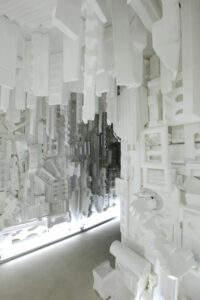 Ronit Keret, after all, solo exhibition, 2014, artist house Tel Aviv, photo by Avraham Hay, courtesy the artist
Ronit Keret, after all, solo exhibition, 2014, artist house Tel Aviv, photo by Avraham Hay, courtesy the artist
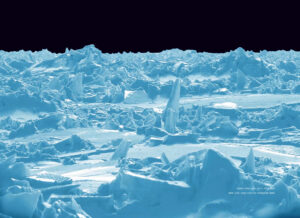 Ronit Keret, Run, still from video, 2022, courtesy the artist
Ronit Keret, Run, still from video, 2022, courtesy the artist
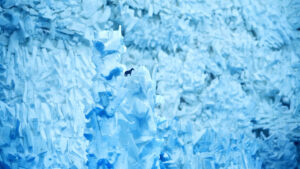 Ronit Keret, Tears, still from video, 2022, courtesy the artist (click on the image to watch the full video on Vimeo)
Ronit Keret, Tears, still from video, 2022, courtesy the artist (click on the image to watch the full video on Vimeo)
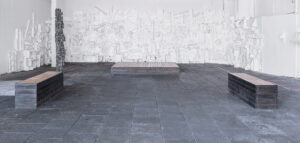 Ronit Keret, White Lie, solo project-outdoor installation, 2021, Nahariya, Israel, photo by Shahar Tishler, courtesy the artist
Ronit Keret, White Lie, solo project-outdoor installation, 2021, Nahariya, Israel, photo by Shahar Tishler, courtesy the artist
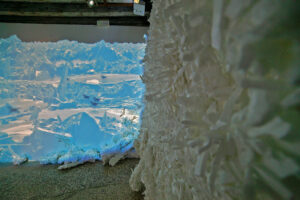 Ronit Keret, Tears, installation view III, Venice 2022, photo by Claudia Corrent, courtesy the artist
Ronit Keret, Tears, installation view III, Venice 2022, photo by Claudia Corrent, courtesy the artist
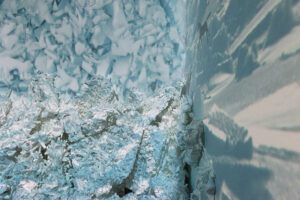 Ronit Keret, Tears, installation view IV, Venice 22, photo by Claudia Corrent, courtesy the artist
Ronit Keret, Tears, installation view IV, Venice 22, photo by Claudia Corrent, courtesy the artist
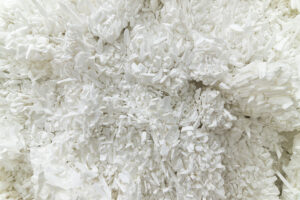 Ronit Keret, Tears, details, styrofoam, variable dimension, photo by Eugene Romanovsky, courtesy the artist
Ronit Keret, Tears, details, styrofoam, variable dimension, photo by Eugene Romanovsky, courtesy the artist

She is interested in the visual, verbal and textual aspects of the Modern Contemporary Arts. From historical-artistic studies at the Cà Foscari University, Venice, she has specialized in teaching and curatorial practice at the IED, Rome, and Christie’s London. The field of her research activity focuses on the theme of Light from the 1950s to current times, ontologically considering artistic, phenomenological and visual innovation aspects.






NO COMMENT